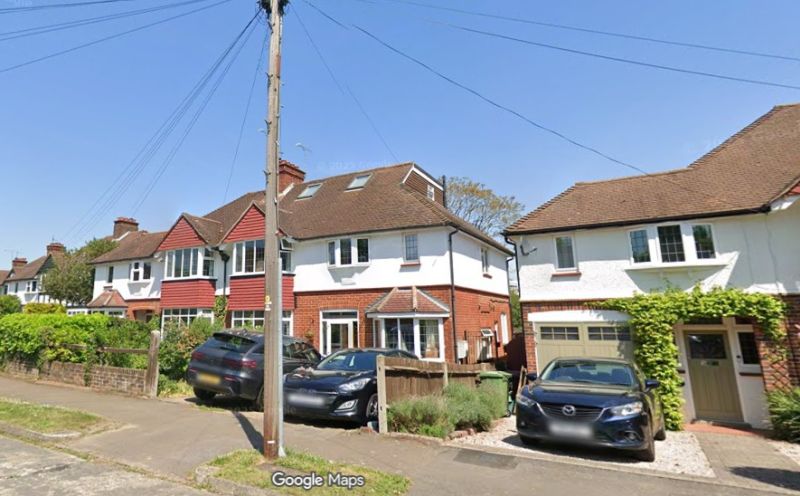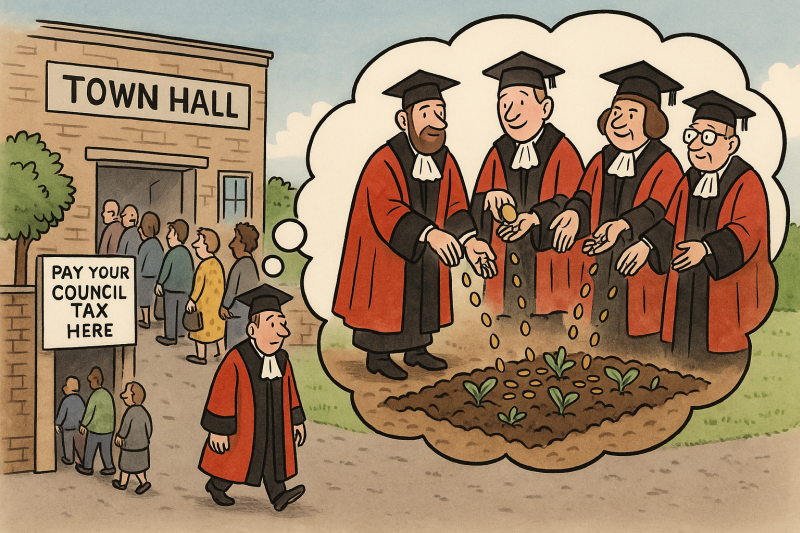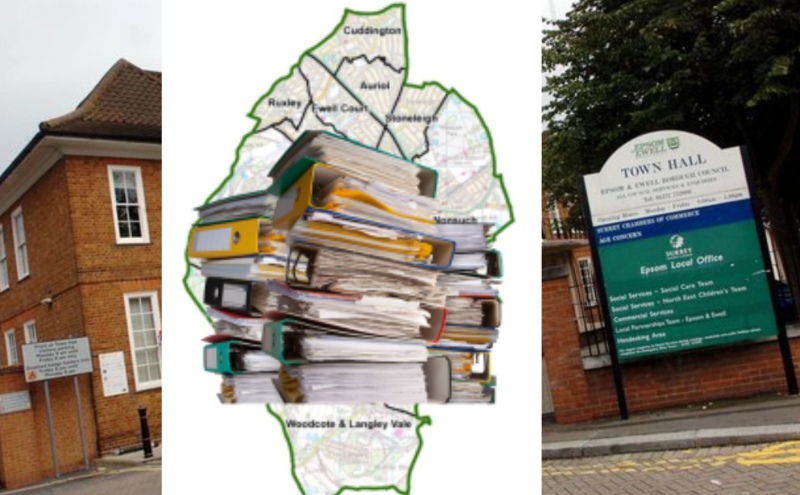Epsom & Ewell’s Green Belt controversy tightens
Tensions flared during a heated meeting of the Licensing and Planning Policy Committee (LPPC) in Epsom on October 17th, 2024, as residents voiced strong objections to the proposed housing targets and the perceived threat to the borough’s Green Belt. The meeting was marked by a series of public statements and a notable exchange between committee members and the public, revealing deep-rooted concerns about the future of Epsom’s green spaces and the transparency of the council’s planning processes.
Government’s Revised Housing Targets and NPPF Changes
At the heart of the controversy is the government’s proposed revision of the National Planning Policy Framework (NPPF), which includes significantly higher housing targets for local councils and reduced protections for Green Belt land. Epsom and Ewell face mandatory targets of 817 dwellings per annum—more than four times the current requirement of 181 dwellings per year as stipulated by the borough’s Core Strategy 2007.
Janice Baker, a resident who spoke at the meeting, expressed her dismay at the scale of the new housing targets, equating the requirement to building “50 football pitches of Green Belt land every year.” She warned that such development would irreversibly alter the borough, leading to increased traffic, overwhelmed public services, and environmental degradation. Baker urged the council to take swift action: “There are only a couple of weeks left for you to avert this disaster… the window of time is still there. It is in your hands.”
Public Frustration with Council Process
Several residents, including Adrian Jones, raised concerns over what they perceived as a lack of transparency and accountability in the council’s planning processes. Jones, in a pointed exchange with the committee, highlighted the delays in receiving responses to his queries about the local plan and questioned whether these were deliberate attempts to impede public participation. “Is this deliberate to stop me preparing or just a mistake?” Jones asked. His concerns were met with a promise from Councillor O’Donovan to investigate the delay, but the tension in the room was palpable.
Samantha Bentall, who was denied the opportunity to speak at the meeting, had her written statement rejected by the committee chair on the grounds that it was deemed “defamatory, offensive, vexatious or frivolous.” In an email exchange with the council, Bentall pressed for clarification on which elements of her statement were objectionable but received no detailed explanation. She accused the council of “gagging residents” and in a letter to the Epsom and Ewell Times, called for her concerns to be published, stating that they were in the public interest.
Epsom Green Belt Group’s Alternative Proposal
Adding to the public discourse, the Epsom Green Belt Group presented an alternative housing proposal that seeks to meet the borough’s housing needs without encroaching on Green Belt land. In a letter addressed to the council’s CEO, Jackie King, and leader of the Residents Association, Hannah Dalton, the group outlined a plan to focus development on brownfield sites and previously developed land (PDL), such as West Park Hospital and Hollywood Lodge.
The group argues that the borough’s housing requirement—calculated as 3,840 dwellings over the plan period—can be met entirely on brownfield and PDL land, avoiding the need to release Green Belt land for development. Their proposal includes detailed site-by-site figures, with 4,199 housing units proposed across various brownfield sites, of which 1,105 would be affordable or social housing.
“We hope that you can look on our proposals favourably,” the letter reads, “and utilise the suggestions to update the Local Plan then publish it for consultation as soon as possible to ensure it is submitted for examination in early January 2025.” The group also highlighted the public’s overwhelming opposition to Green Belt development, citing the 87% of respondents to the Regulation 18 consultation who rejected the idea.
Council’s Response and Timetable
Councillor O’Donovan, (RA Ewell Court) chair of the LPPC, acknowledged the public’s concerns but stressed that the council is constrained by legal requirements and external factors in the development of the Local Plan. In response to a question from Adrian Jones about the council’s timetable for submitting the Local Plan, O’Donovan explained that while the council is working towards a May 2025 submission, the timetable is dependent on the completion of external workstreams and the processing of public consultation responses.
“The timetable for progressing the local plan is as set out in our Local Development Scheme,” O’Donovan said, noting that public consultation on the Pre-Submission Local Plan is expected to begin in January 2025. He also reassured residents that the council is exploring ways to expedite the process but emphasised the importance of having a robust evidence base to avoid future challenges to the plan.
However, many residents remain unconvinced by the council’s assurances. Mark Todd, chair of the local Labour Party, expressed his support for the Epsom Green Belt Group’s proposals and urged the council to prioritise the protection of green spaces while delivering the housing the borough needs. “Local people want housing and green spaces,” Todd said. “I commend the local Epsom Green Belt group’s drive to engage with local politicians and highlight all the options available.”
The Next Steps and the Community’s Expectations
The clock is ticking for the council to submit its Local Plan before the anticipated changes to the NPPF come into effect in January 2025. Failure to do so could mean that Epsom and Ewell will be forced to meet the higher housing targets, putting vast swathes of Green Belt land at risk.
Nathan Chan and Casper Grunwald, two Year 8 students, delivered a poignant joint statement, reminding the council of its responsibility to future generations. “This is your past, our present, and many generations to come’s future,” Chan said. “Do you want to be remembered as the people who saved Epsom, or the people who ruined our Green Belt?”
The council now faces the challenging task of balancing the need for new housing with the community’s desire to protect its cherished green spaces. As the debate over the Local Plan intensifies, one thing is clear: the eyes of Epsom’s residents are firmly fixed on the council, and they expect nothing less than a transparent and equitable solution to the borough’s housing crisis.
Conclusion
As the Local Plan moves towards its final stages, the council must navigate a complex web of legal obligations, public opinion, and environmental considerations. The decisions made in the coming months will have a lasting impact on the character of Epsom and Ewell, and the council’s leadership will need to ensure that all voices are heard and that the best possible outcome is achieved for the community.
In the words of Nathan Chan: “This is your past, our present, and many generations to come’s future.” How the council responds to this challenge will determine whether Epsom’s green spaces will be preserved for those future generations or lost to the demands of urban expansion.
Related reports:
Epsom Local Plan controversy heats up
Challenges to Epsom and Ewell Council’s Handling of Local Plan
Time to press the gas on Epsom’s Local Plan?
and many many more. Search “local plan”.















